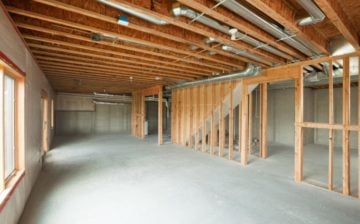
Home renovations can be both exciting and daunting. Whether you want to modernize your living space, create more functional rooms, or increase your property’s value, proper planning is essential for a successful outcome. A well-thought-out renovation can transform your house into the home of your dreams.
However, without proper preparation, the process can quickly become overwhelming and expensive. In this step-by-step guide by an experienced facility management company, we will walk you through the process of planning a home renovation, providing you with the tools and insights needed to turn your vision into reality.
Step 1: Define Your Goals and Budget
Before diving into the renovation project, clearly define your goals and priorities. According to a study by the National Association of Realtors, 35% of homeowners choose to renovate their homes to improve functionality and liveability, while 29% do it to upgrade and modernize their homes.
Make a list of the specific changes you want to make in each area of your home. Additionally, set a realistic budget based on your financial capabilities and the extent of the renovations.
Step 2: Research and Gather Inspiration
Now that you have a clear vision of your renovation goals, it’s time to gather inspiration. A survey by Houzz found that 58% of homeowners use online platforms for home renovation ideas and inspiration.
Browse home improvement magazines, websites, and social media platforms like Pinterest and Instagram to find design ideas that resonate with your taste. Creating mood boards can help you visualize the overall look and feel you want to achieve.
Step 3: Assess the Scope of the Renovation
Next, assess the scope of the renovation project. Divide your home into different zones (e.g., kitchen, bathroom, living room) and evaluate the changes required in each area. Identify potential structural issues, plumbing, and electrical concerns that might require professional attention.
Step 4: Choose Professional Help or DIY
Decide whether you’ll hire professionals for the entire project or handle some aspects yourself. While DIY can save money, some tasks are better left to experts. According to the Joint Center for Housing Studies of Harvard University, spending on home improvement services reached $332 billion in 2021.
Consider consulting with architects, interior designers, or contractors to ensure the renovation aligns with local building codes and regulations.
Step 5: Obtain Necessary Permits
Depending on the scope of the renovation, you may need permits from your local government. Research the permits required for your specific project and apply for them before commencing any work.
Skipping this step can lead to costly legal issues and delays. According to HomeAdvisor, the average cost of obtaining a building permit is $1,063, but it varies depending on the location and scope of the project.
Step 6: Create a Detailed Timeline
Develop a comprehensive timeline for your home renovation. This timeline should include a breakdown of each phase of the project, including start and end dates for each task. Keep in mind that unexpected delays are common in renovations, so add some buffer time to your schedule.
Step 7: Select Materials and Finishes
Choose the materials and finishes that align with your vision, budget, and functional needs. Compare prices from different suppliers and retailers to get the best value for your money. Don’t forget to factor in delivery times to ensure materials are available when needed.
According to a survey by the National Kitchen & Bath Association, the average kitchen renovation cost in 2021 was $45,000, with cabinets and hardware accounting for 29% of the total cost.
Step 8: Plan for Temporary Living Arrangements
If your renovation project is extensive, consider temporary living arrangements during the construction phase. Staying with family or friends, or renting a temporary property can reduce disruptions and stress.
Step 9: Demolition and Construction
With all preparations in place, the actual renovation work begins. If you have contractors working on your project, communicate regularly and monitor progress. Stay flexible as changes might be necessary due to unforeseen issues.
Step 10: Finishing Touches and Final Inspections
As the renovation nears completion, focus on the finishing touches. Install fixtures, paint, and add any additional details that enhance the aesthetics and functionality of your home. Schedule final inspections to ensure compliance with building codes and safety standards.
Conclusion
Planning a home renovation from start to finish requires careful consideration and thorough preparation. By defining your goals, setting a budget, gathering inspiration, and choosing the right professionals, you can turn your vision into a reality. Be patient and adaptable throughout the process, and you’ll be rewarded with a beautiful, functional, and revitalized home that brings joy to you and your family for years to come. Happy renovating!
We hope you found this blog post on A Comprehensive Guide to Planning a Home Renovation: From Concept to Completion, useful. Be sure to check out our post on Guide on Home Renovation When Moving House 2023 for more great tips!
Have Experience in the Moving Industry? Want an Additional Income Stream? Work With All Around Moving!
Partner with All Around Moving and join the Work With Us program. We’ll help you make money arranging moving services, by establishing your own moving consultant business operation. Read the simple terms by Clicking here to learn more.





